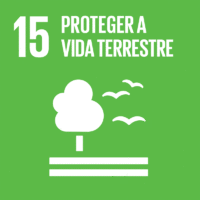Ciência_Iscte
Publicações
Descrição Detalhada da Publicação
Mitochondrial DNA variation and population structure of the island endemic Azorean bat (Nyctalus azoreum)
Título Revista
Molecular Ecology
Ano (publicação definitiva)
2004
Língua
--
País
Estados Unidos da América
Mais Informação
Web of Science®
Scopus
Google Scholar
Esta publicação não está indexada no Overton
Abstract/Resumo
The Azorean bat Nyctalus azoreum is the only endemic mammal native to the remote archipelago of the Azores. It evolved from a continental ancestor related to the Leisler's bat Nyctalus leisleri and is considered threatened because of its restricted and highly fragmented distribution. We studied the genetic variability in 159 individuals from 14 colonies sampled throughout the archipelago. Sequences of the D‐loop region revealed moderate but highly structured genetic variability. Half of the 15 distinct haplotypes were restricted to a single island, but the most common was found throughout the archipelago, suggesting a single colonization event followed by limited interisland female gene flow. All N. azoreum haplotypes were closely related and formed a star‐like structure typical of expanded populations. The inferred age of demographic expansions was consistent with the arrival of founder animals during the Holocene, well before the first humans inhabited the Azores. Comparisons with a population of N. leisleri from continental Portugal confirmed not only that all N. azoreum lineages were unique to the archipelago, but also that the current levels of genetic diversity were surprisingly high for an insular species. Our data imply that the Azorean bat has a high conservation value. We argue that geographical patterns of genetic structuring indicate the existence of two management units.
Agradecimentos/Acknowledgements
--
Palavras-chave
Chiroptera,colonization,D‐loop,genetic structure,island,mismatch analysis,bat,biodiversity,conservation
Classificação Fields of Science and Technology
- Ciências Biológicas - Ciências Naturais
Contribuições para os Objetivos do Desenvolvimento Sustentável das Nações Unidas
Com o objetivo de aumentar a investigação direcionada para o cumprimento dos Objetivos do Desenvolvimento Sustentável para 2030 das Nações Unidas, é disponibilizada no Ciência_Iscte a possibilidade de associação, quando aplicável, dos artigos científicos aos Objetivos do Desenvolvimento Sustentável. Estes são os Objetivos do Desenvolvimento Sustentável identificados pelo(s) autor(es) para esta publicação. Para uma informação detalhada dos Objetivos do Desenvolvimento Sustentável, clique aqui.

 English
English


